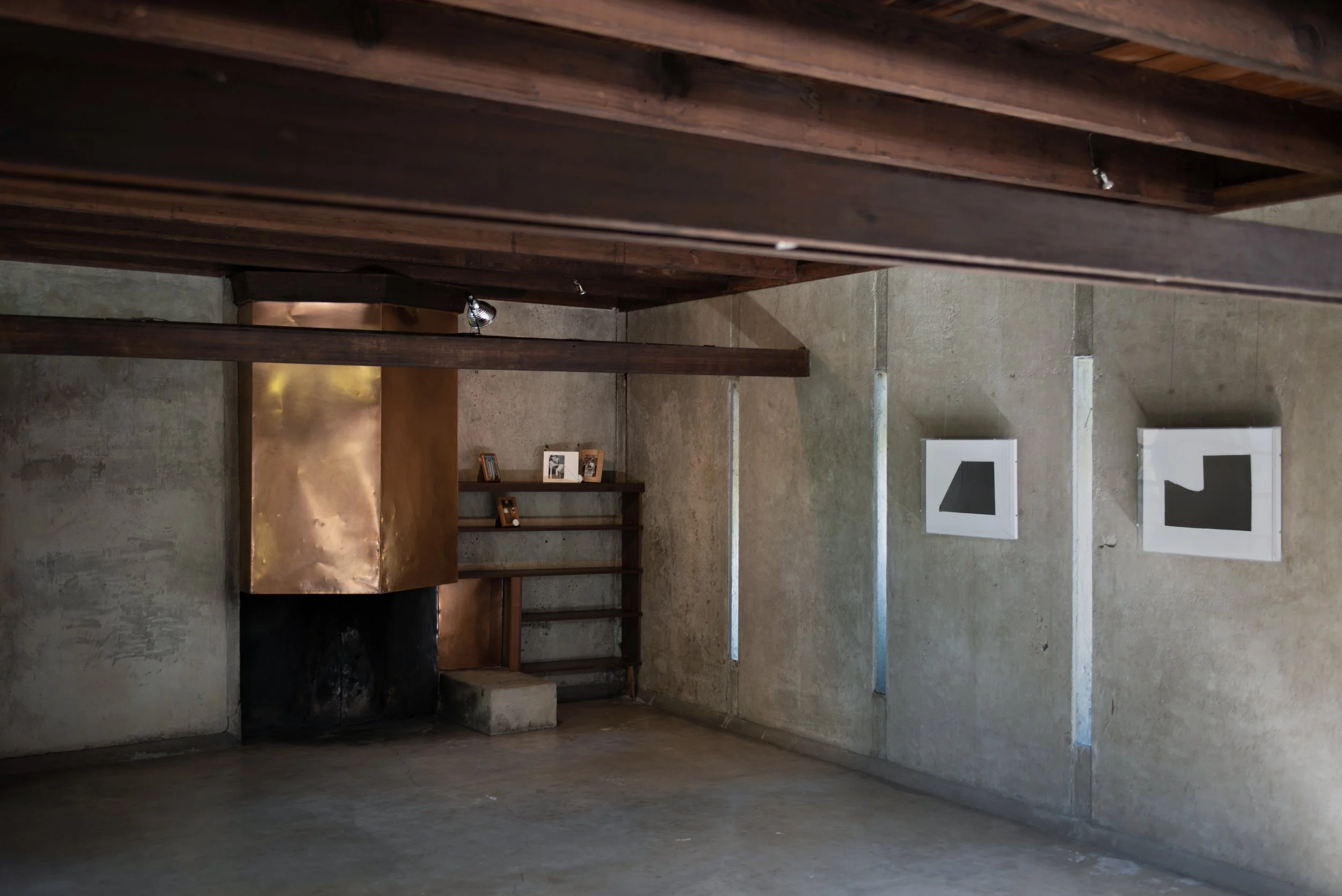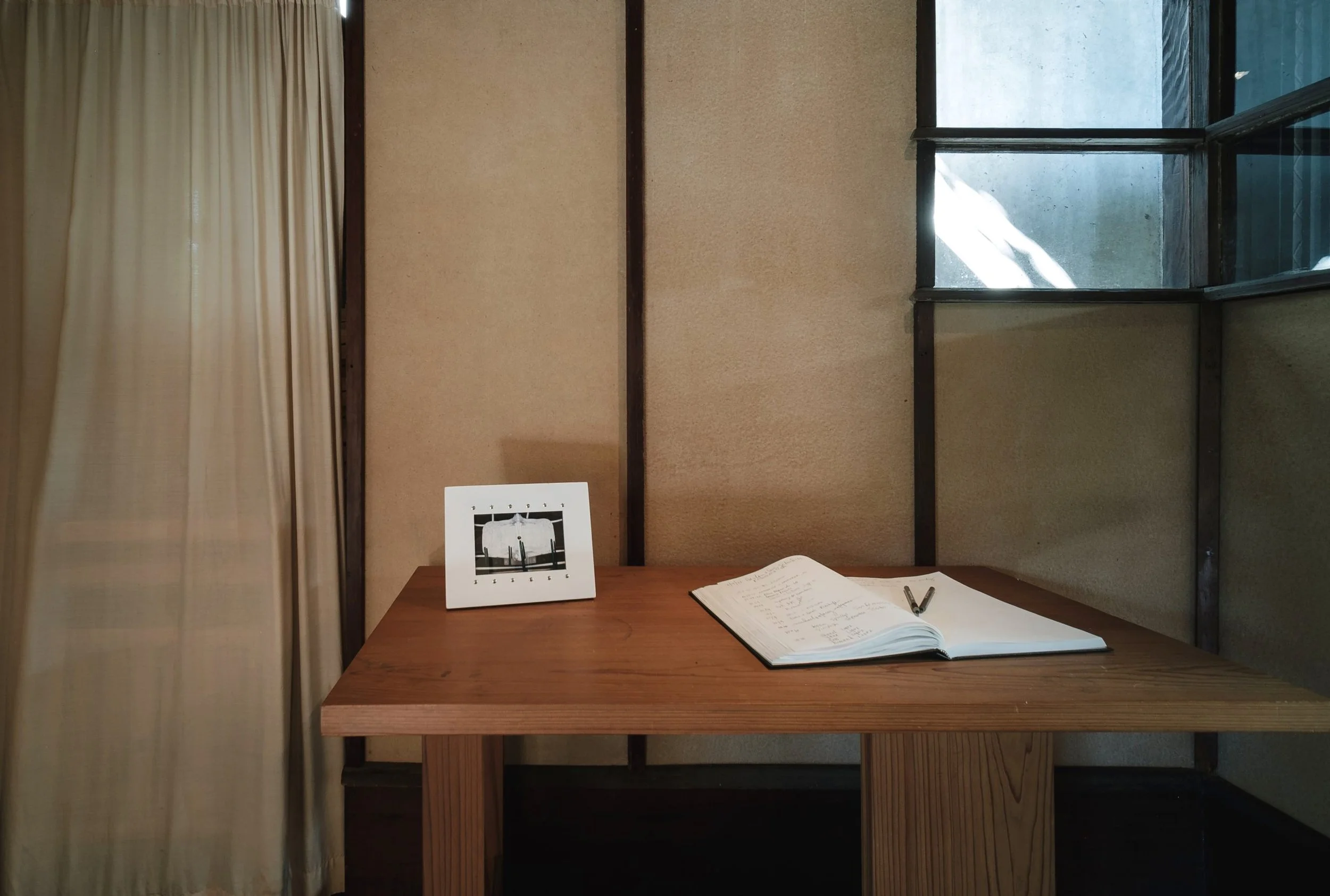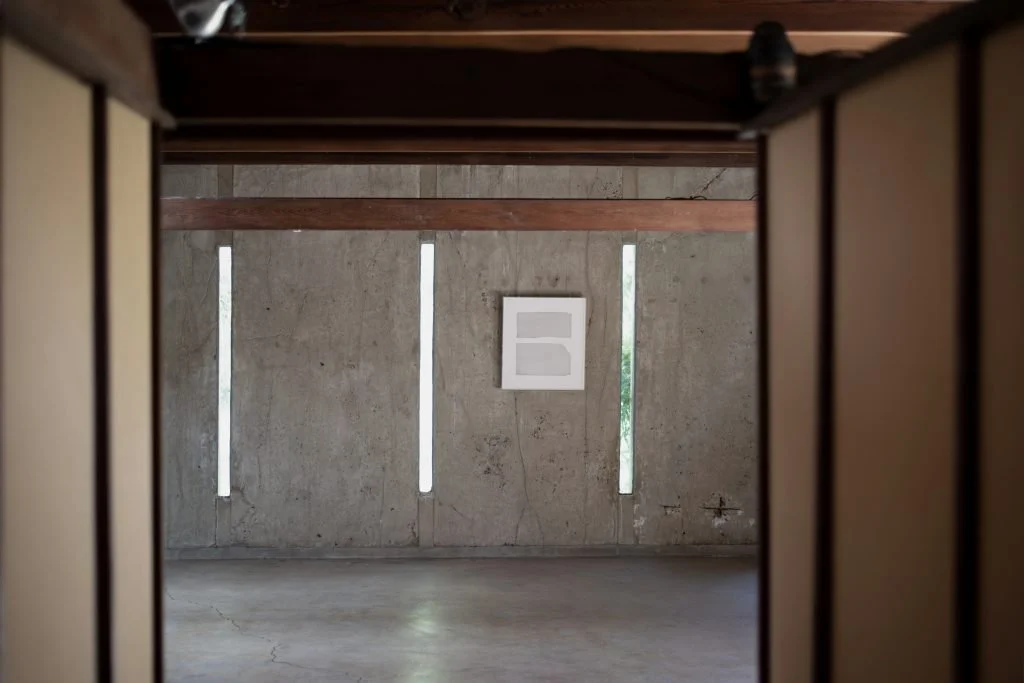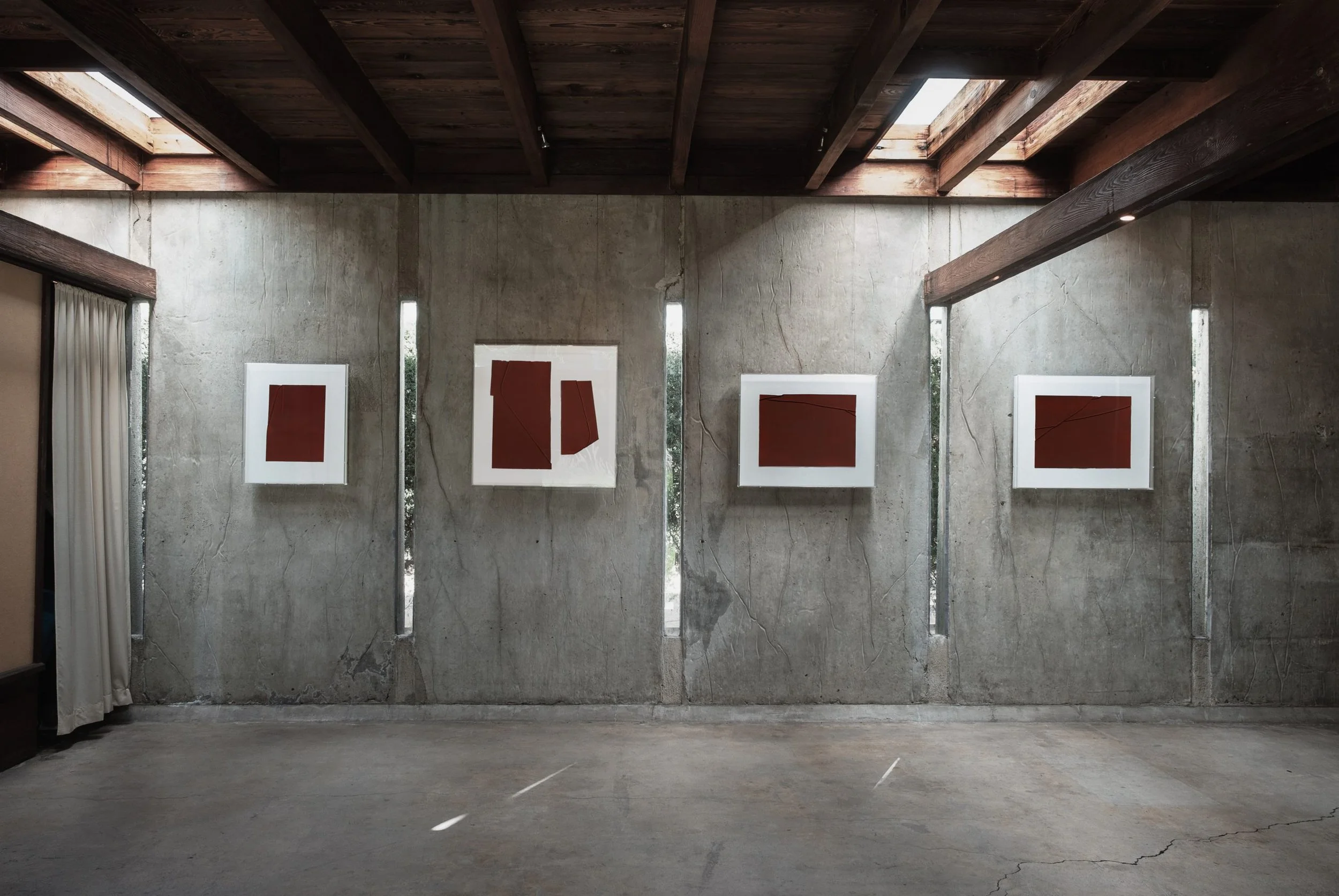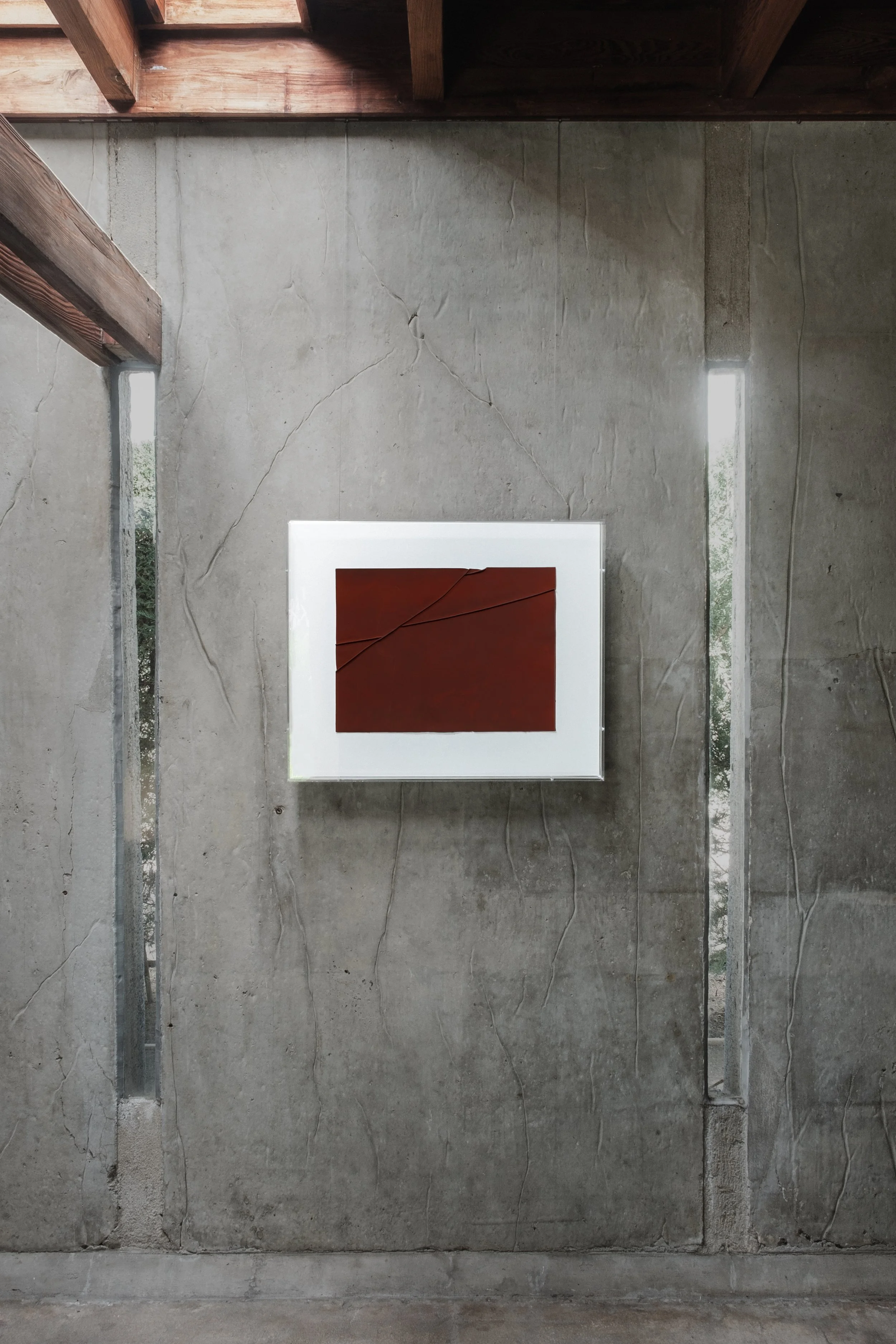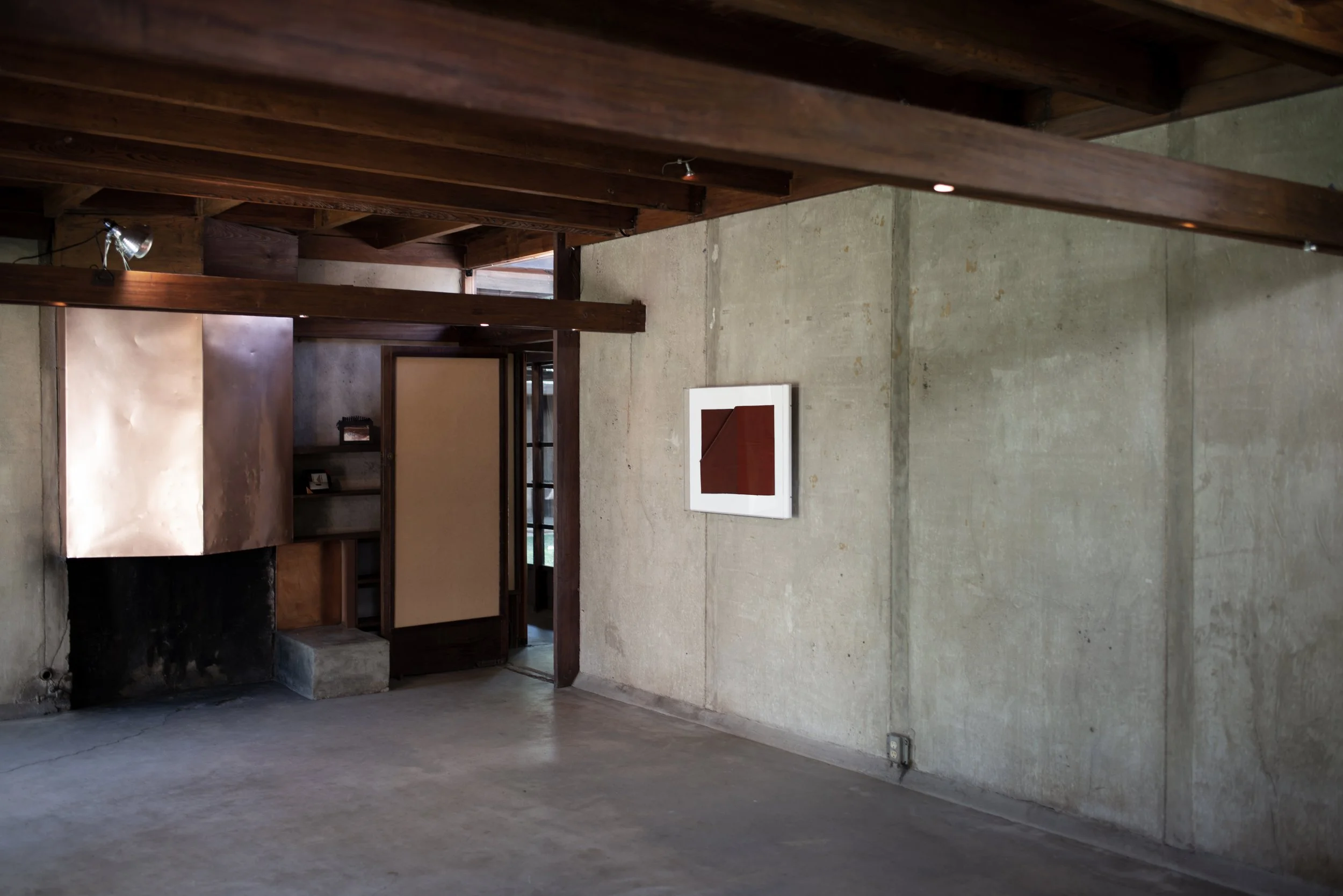Installation view of I hear the ancient music of words and words, yes, that’s it. Photography by Esteban Schimpf.
MAK Center for Art & Architecture proudly presents Vincent Fecteau and Florian Pumhösl in the exhibition, I hear the ancient music of words and words, yes, that’s it., curated by Bärbel Vischer. Set against the context of modernity, the exhibition examines the relationship of images, objects, and legacies of abstraction. Together, the artists Vincent Fecteau and Florian Pumhösl orchestrate a dialogue between pictorial and three-dimensional work, studio production, and the architectural setting of the Schindler House as it relates to aspects of materiality, surface, pattern, color, and light.
The title of the exhibition, I hear the ancient music of words and words, yes, that’s it., quotes the Brazilian writer Clarice Lispector, echoing the intimate sense she generated in her writing and corresponding to space, moods, and history. The exhibition, evolving in Rudolph M. and Pauline Schindler’s former studio and residence, includes objects from their private collections and work studies by both artists. Fecteau and Pumhösl evoke an exchange with their studios and focus on inventories, studies, attempts, materials, and snapshots of production that lead to imaginative leaps in which we can follow blurred lines and raw edges of modern art from today’s perspective.
Artists
Vincent fecteau
Vincent Fecteau (b. 1969) is a San Franciscan based artist who produces sculptures of various materials including papier-mâché, cardboard, resin clay. Often described as abstract, their forms and colors, symbolic fragments of architecture, and found objects engage with representation, specifically photography and its depiction of space. For this exhibition, Fecteau interweaves digital photographic images with collages. Loosely arranged, and integrating furniture pieces they interlink sculpture and architecture. Everyday objects, architectural structures, mass media artifacts, and impressions of social interaction build a momentum in the setting of a communal home. He is interested in the atmosphere of the rooms and living spaces. There are images the artist has collected as well as images he has taken over the years. Fecteau likes the idea of showing them as one would family photos, in a series of arrangements throughout the house. The display creates a narrative between ideas and reality. He thinks of these photographic works – snapshots – as sculptures deployed in the architecture. Patterns and shapes, curved elements, expressive forms, architectonical surfaces, found objects, and the play of color define his photograph-as sculpture works.
Florian Pumhösl
Florian Pumhösl (b. 1971) currently lives and works in Vienna. He contextualizes the abstraction of images, materials, and forms by mediating contemporaneity in the history of crafts and objecthood. His matrix of works combines the quality of the graphic picture and the presence of paintings, expanding the boundaries of their medium and material – like sheets of steel, aluminum, and lead or ceramics and casts of plaster – as well as the ephemerality of color and light. In his studio archive, Pumhösl keeps a large selection of works, which mark the process of thought, image, and production. Interested in the deformation of the pictorial space, Pumhösl is aware of the ambiguity of the memory of materials. Forms, shapes, and cut-outs relate as negative forms to warped reliefs. Found roofing material, as models, led him to studies in lead foil. These works are made of folded lead sheets, with small irregularities in their angles and shapes. Defined by singular construction and its repetition, some of the constellations and compositions appear like textile fragments (and are engendered by that association). Pumhösl painted the works in a range of uncommon pigments: a ‘rusty red’ addresses the iron oxide-base of the material, black creates an infinite depth, and shades of blue and white enhance the idea of abstraction, balance, and space.
Bärbel Vischer is the Curator of Contemporary Art at the MAK – Museum of Applied Arts in Vienna, Austria, since 2007. As the head of the MAK Contemporary Art Collection, she focuses on experimental, gender-related, and inter-cultural approaches to contemporary art and architecture.
This exhibition and programming is made possible with the generous support of The City of West Hollywood.

